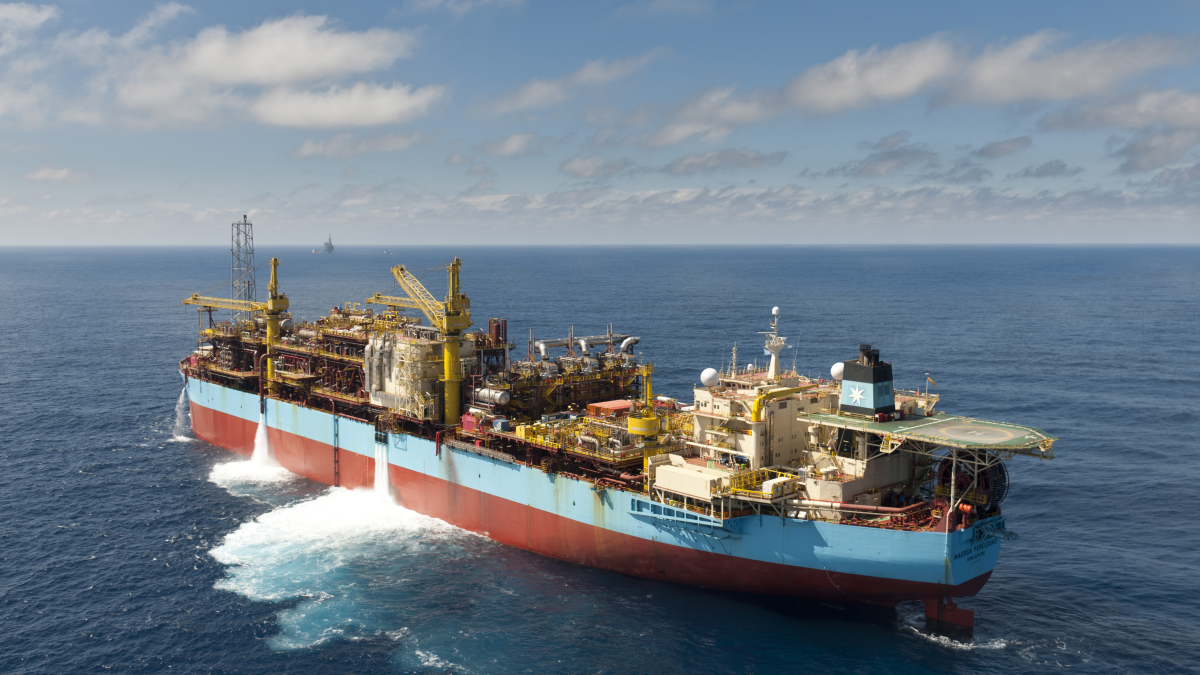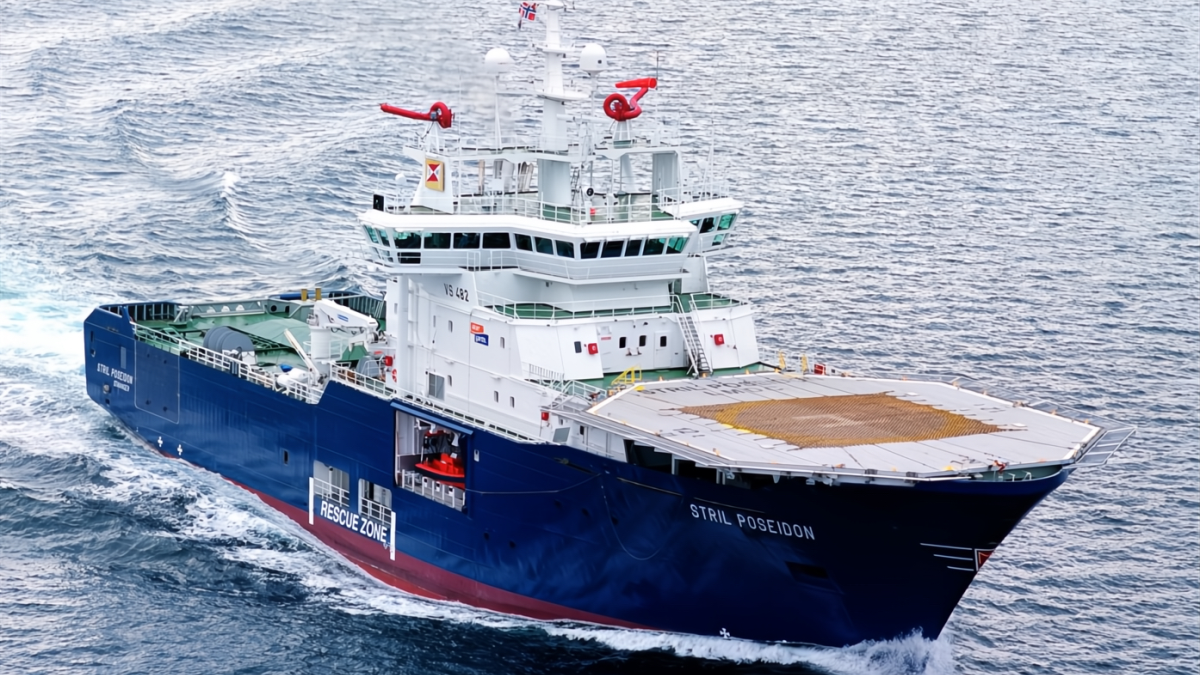Business Sectors
Contents
Register to read more articles.
Strong offshore energy fundamentals bring smiles to OSV owners’ faces
Renewed interest in offshore oil and gas and growing investments in renewables will push upstream capex to US$280Bn by 2025, keeping the supply of available equipment tight, and accelerating the rise in OSV and rig utilisation and day rates
Offshore support vessel owners are smiling again thanks to current market fundamentals driving robust demand for their assets, generating strengthening vessel day rates and utilisation.
Delegates at Marine Money Week 2023 in New York City in June had an opportunity to hear first-hand from leading energy analysts about the depth of the current offshore oil and gas market resurgence, and why OSV owners could be smiling for years to come.
Despite the transition from fossil fuels to renewables to lower CO2 and greenhouse gases emissions, Rystad Energy principal Mike McCormick said the absence of investment and sanctioning of new offshore oil and gas projects would leave a “massive energy gap”. While some advocate for halting investment in offshore drilling altogether, Mr McCormick said: “We need to drill new wells.”
Citi managing director Dr Edward Morse, who provided the keynote for the event, said that there was “renewed interest in investing in the E&P sector, as fossil fuels are necessary to support the transition.” However, investment needs to be made in both fossil fuels and renewables to meet current and future global energy needs. “We need to walk and chew gum at the same time,” he said.
“Improving business lends itself to intelligent consolidation”
While spending will not reach the heady levels of 2014, when offshore oil and gas upstream investments topped US$300Bn, Mr McCormick does see spending increasing on average 10% annually between 2022 and 2025. Total offshore oil and gas upstream investment will approach US$200Bn in 2024 and 2025.
Adding capex investment in offshore wind to the mix, makes for a meaningful recovery, said Mr McCormick. Rystad Energy data shows spending on global offshore wind growing from US$56Bn in 2023 to US$68Bn in 2024 to US$79Bn in 2025. Combined, this wave of investment in both offshore oil and gas and offshore wind will hit about US$280Bn by 2025. After seven years of downturn, this increased upstream investment has created a surging demand for OSVs, drilling rigs and other equipment.
“We are in an up cycle, but one smaller than the previous super cycle,” said Mr McCormick.
Rig demand increasing
Strong rig demand growth began last year, and utilisation rates for high-spec Tier 1 drillships in Q2 2023 are at 90%, while rates for ultra-harsh semis are at 83% utilisation. Other, lower-tier floaters lagged behind at 64% utilisation.
Rates, meanwhile, are trending upward. Mr McCormick said drillship day rates were well above US$400,000 per day at Q2 2023 and heading toward US$500,000. “It is not a question of if, but when,” he said.
Day rates are increasing for Tier 1 and 2 OSVs, too. For example, “rates are going to reach US$40,000 per day for high-spec PSVs in Brazil,” said Mr McCormick.
He shared growth forecasts for three OSV vessel types — PSVs, AHTSs and OCVs — for the period between 2022 to 2026. Average annual demand will grow 2.3% for PSVs, 3.5% for AHTS and a whopping 8.8% for OCVs, thanks to offshore wind. Overall, the global fleet demand for these types of OSVs will rise from 2,076 in 2022 to 2,445 in 2026.
“There is a real scarcity of vessels out there,” noted Tidewater CEO and president Quintin Kneen.
And a recent pullback in oil prices has not had a material impact on offshore activity, he said. This is a departure from historical trends, when this might have resulted in a drop off in tenders or renegotiation of charter contracts. Instead, he has seen a continued acceleration in day rates; Tidewater, for example, reported an increase in day rates of US$1,600 in Q1 2023.
“There is a real scarcity of vessels out there”
HOS chairman, president and chief executive Todd Hornbeck agreed, saying he has never seen such demand for OSVs from so many different sectors in his 32 years in the business. “The wind industry is pulling our equipment,” and “militaries around the world are finding that our equipment is conducive to their operations,” he said.
Newbuilds a no-go
Despite tight supply, panellists agreed day rates are not nearly at the levels needed to justify the cost of capital to build a next generation of OSVs.
“I do not see any newbuilds happening,” said Mr Hornbeck, adding “the cost of capital is through the roof.”
Adding to the high cost of capital, banks are hesitant to lend to the OSV sector, with peak oil demand forecast for 2026. Further complicating the picture is the transition to low- and zero-carbon fuels, with no clear frontrunner emerging.
Given that an OSV could have a 20-year service life, “you would not build a carbon-intensive vessel,” said SEACOR Marine president and chief executive John Gellert.
Market consolidation
The panel agreed that there was still too much fragmentation in the OSV ownership structure. “Improving business lends itself to intelligent consolidation,” said Mr Gellert.
Tidewater has been the king of consolidation in the sector, adding Gulfmark, Swire Pacific Offshore and most recently completing the purchase of 37 PSVs from Solstad Offshore in July. Mr Kneen indicated an openness to growing Tidewater’s fleet through further M&A. “There are a few more pieces we can add,” he said, noting Tidewater was “a little light” in the Americas.
Fair return contracts
One result of the prolonged offshore oil and gas downturn is that oil companies do not know how to fairly price a vessel, according to the three owners.
“We don’t charge enough, and we assume too much risk,” said Mr Hornbeck, noting day rates should reflect the value of the assets, service and the risk assumed by the OSV owner.
“Our companies exist because oil companies don’t want to take the risk,” said Mr Hornbeck. “They could own all the boat companies … but they want to shove that risk somewhere else.”
Similarly, offshore wind developers are looking to secure vessels for their US offshore wind projects at unrealistic charter rates, noted Mr Hornbeck. “The numbers don’t work. It reaches the point where something has got to give. The days are over when we can subsidise the business. We have to make a fair return,” he said.
All the panellists were bullish about the offshore energy market’s future, with continued strong demand for OSVs, rising day rates and tight vessel supply. “And it is going to get tighter,” said Mr Kneen.
Related to this Story
Events
International Bulk Shipping Conference 2025
Tankers 2030 Conference
Maritime Navigation Innovation Webinar Week
© 2024 Riviera Maritime Media Ltd.















